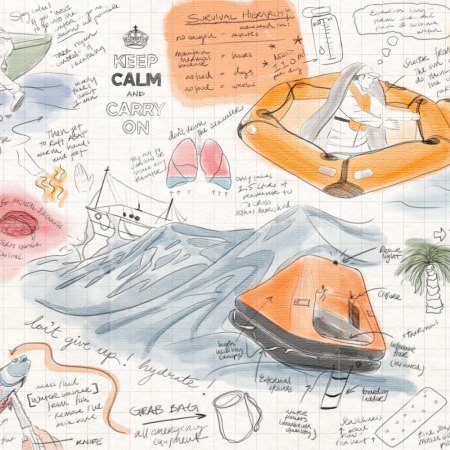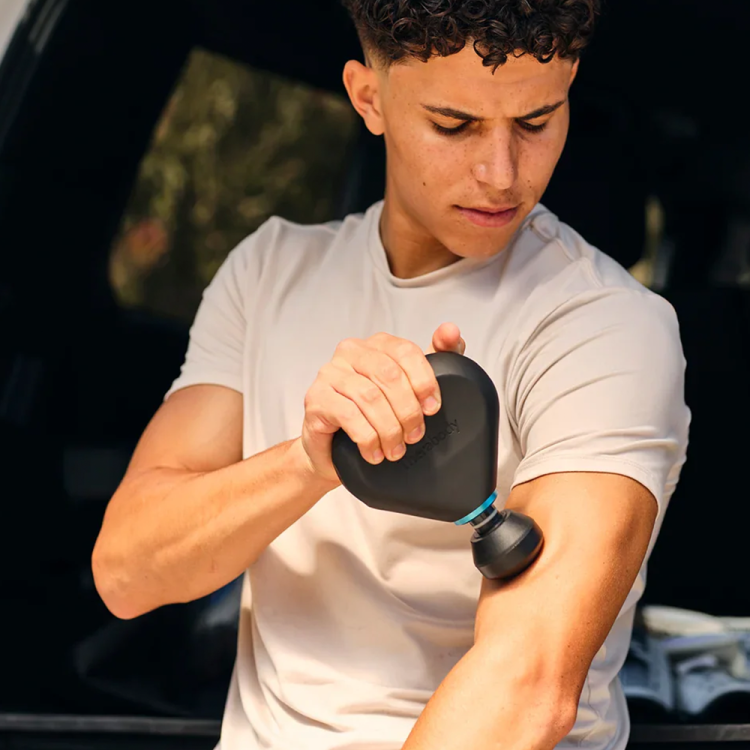This article is part of our brand-new Adventureland series, a collection of “how to” field notes from academic experts, modern explorers and endurance athletes throughout the world. From escaping bears to crossing deserts, they detail the joys of courting adventure — and their tips for surviving it.
Human beings are built to cover long distances. Ever since our ancestors first set out across the grassy plains, spear in hand, a delicious mammoth lumbering in the distance, we’ve endeavored to move as quickly and efficiently as possible.
We might not rely on speed and stamina to quite the same degree today — for most of us, upping our half marathon PBs or being able to give it all in an arduous HIIT session is a matter of personal pride, not life or death — but there are still benefits to be had.
No one knows this better than professor Grégoire Millet, perhaps the world’s leading expert in altitude or “hypoxic” training, who’s located at the University of Lausanne’s Institute of Sport Sciences in Switzerland. Now 61, Millet grew up “in moderate altitude” cross-country skiing in France.
Millet put this background and fascination with altitude to good use, setting out to study the impact of altitude training on athletic performance. By the age of 26, he had become a French national coach in the triathlon. “At that time, the only method available was what we call ‘Live High, Train High’,” he says. “So you go to moderate altitude and then you spend three to four weeks living and training up there.”
Thankfully, as the understanding around hypoxic training developed, techniques such as hypoxic tents, nasal breathing techniques and even blood-flow restriction mean athletes no longer must decamp halfway up a mountain to get the benefits.
Millet was instrumental in exploring these techniques, working with British triathlete and five-time World Triathlon title holder Simon Lessing in the U.K., before specializing in hypoxic training at Lausanne in 2008. He continues his work in Switzerland today, delving ever deeper into the science of hypoxic training, and developing methods that have been adopted everywhere from the Welsh rugby team to racquet and combat sports worldwide.
How to Get Into “Himalayan Shape”
A training blueprint for those with zero plans of actually climbing EverestWhat Can Altitude Training Do for Me?
Millet is, appropriately, very academic in his description of altitude training and its benefits. In layman’s terms, we’re talking about training at 7,000 to 8,000 feet above sea level, where there’s less oxygen in the air, which forces your body to adapt — think of the oxygen-depleted conditions of the Kenyan highlands, where the world’s best marathoner, Eliud Kipchoge, trains. Do this for long enough, and you can carry the benefits back down the mountain with you.
The science backs it up. A 2016 study found that our bodies adapt to altitude by increasing the levels of erythropoietin (EPO), the hormone that makes red blood cells. As the red blood cells deliver oxygen around the body, more EPO equals greater oxygen delivery. At altitude, this helps you keep your breath; at sea level, it can make you a more competitive athlete. Later, a 2020 study of 12 runners observed an increased VO2 max — the maximum amount of oxygen your body can absorb and use during exercise — after 11 days of altitude training.
Millet believes the benefits could even extend beyond fitness. “Hypoxic conditioning is much, much larger than just cyclists, triathletes and swimmers,” he says. “Keep in mind that the Nobel Prize in 2019 was awarded to three scientists who were working on the molecular mechanisms that regulate our body, and how we react to differences in oxygen supply.” In other words, this is something we’ll be hearing more of in the future.
How to Mimic Hypoxia (Without the Fancy Kit)
Want to add altitude training to your arsenal? As Millet explains, one way is sprint training while in hypoxia, i.e., with a blood-oxygen saturation below 90%. This can be induced by exhaling after a full inhalation, then holding your breath, a technique known as “voluntary hypoventilation at low lung volume,” or VHL.
Millet explains that it’s important to “induce the deoxygenation long enough for some adaptation to take place” but warns that if you hold your breath too long you’ll go into hypercapnia, a build-up of carbon dioxide in the blood, which serves as a signal to our brain that we need to breathe (and is, unfortunately, what tends to happen when we drown).
Without technical equipment to measure lung capacity, this is a guessing game, but try to go on feel, and remember to stop if it feels dangerous. For best results, always have a training partner keeping watch when trying this, too.
For the exercise itself, we’re going to follow a four-week 2018 study on 21 rugby union players.
- Take a deep breath, let it out, then sprint 40 meters as fast as you can.
- Rest for 30 seconds, take a breath, exhale, and go again.
- Repeat until failure.
In the study, a month of this training allowed the breath-holding players to complete an average of 14.9 sprints, up from 9.1 at the start, leading researchers to conclude that sprinting while at VHL is an effective strategy for improving sprint ability. You should notice the results in your next 5K time, too.
If you want a less vigorous entry into hypoxic training, the American Lung Association suggests expanding your lung capacity — and therefore your available oxygen — with this belly-breathing protocol which you can practice for five to 10 minutes every day.
- Rest a hand on your stomach.
- Breathe in slowly through the nose, taking note of how your stomach rises.
- Exhale through the mouth.
- Inhale through the nose again, trying to get the stomach to rise more than last time.
- Repeat until the time is up, aiming to make your exhalation two or three times longer than each inhalation.
The Charge will help you move better, think clearer and stay in the game longer. Subscribe to our wellness newsletter today.



















